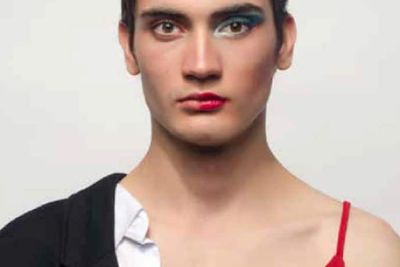A large, oval braided rug occupied most of the floor in my grandmother's living room. The muted browns and blues of the strips of cloth, faded from years of wear, twisted in and out of the weave, crisscrossing each other like ribbons of highway, always leading back to where they began. I passed many childhood hours tracing those threads round and round, in and out, back to their source. It was made, Granny said, in the old country.
"Germany!" I said confidently when she told me that.
She shook her head. "No," she explained. "We are like the rug. Your great grandfather lived in Alsace Lorraine and spoke French. And his mother was Dutch. Our heritage is interwoven, just like the rug." She gestured, waving her hands around one another. And when I asked for more explanation, she simply smiled and told me I was a ‘Mongrel.’
I thought of that rug again, recently, while attending a meeting of a large group of people, most of whom identified as transgendered. I looked around the room and thought to myself, ‘We're mongrels.’ Not male or female, really, but each of us, to varying degrees, a mixture of the two.
But that’s not a popular view to have. A while back, one of the members of the group announced that her surgery date had been scheduled. Everyone applauded and wished her well, and as we did, one of the other members, a “post-op” TS leaned over and said to me, "You're next."
Even within our own trans community, there is pressure to choose, to be one or the other. Cross-dressers are regarded as lesser members because we're seen as afraid or unwilling to make the leap, to cross over. “You really want to be the ‘other',” I've been told, “you just don't have the courage to own up to it.”
Such comments tend to be made by those who talk about gender as if it's absolute. If you have a penis, you're a male; if you have a vagina, you're a female. But think about it. Have you met anyone who is exclusively one or the other? Even the most macho man has some characteristics usually associated with the feminine, just as the most feminine woman will have some characteristics associated with being male.
Furthermore, isn’t it those characteristics that we use to identify someone as masculine or feminine? We see things like a beard, broad shoulders, a high forehead and large hands, and we hear a deep voice and conclude the person is a man. Or we see a smooth face, sloped shoulders, arched eyebrows, and thin hands, and we hear a melodious voice and conclude the person is a woman. We sort through the elements we've learned to associate with one or the other gender and draw our conclusions.
This need to classify gender as binary is a practice learned from day one; accepting it is part of an elemental survival need. We buy into it early, even if we know it's not valid. We are all gender mongrels, but the pressure to maintain the binary gender identity system forces us to shut down the characteristics of the gender not associated with the one declared for us at birth. And we all know what this does to those of us with an unacceptable proportion of the ‘other'—the effeminate man, the butch woman.
The conflict is further exacerbated by the fact that most of us feel we must choose, that we must be one or the other, that to live anywhere in the middle ground is to choose an unnecessarily complicated life. So much of the world is based on the binary gender system that those of us in the transgender community who don't completely identify as ‘one rug' or ‘the other' are looked down upon. I wonder: how does that fit into the LGBT precept of tolerance and acceptance?
